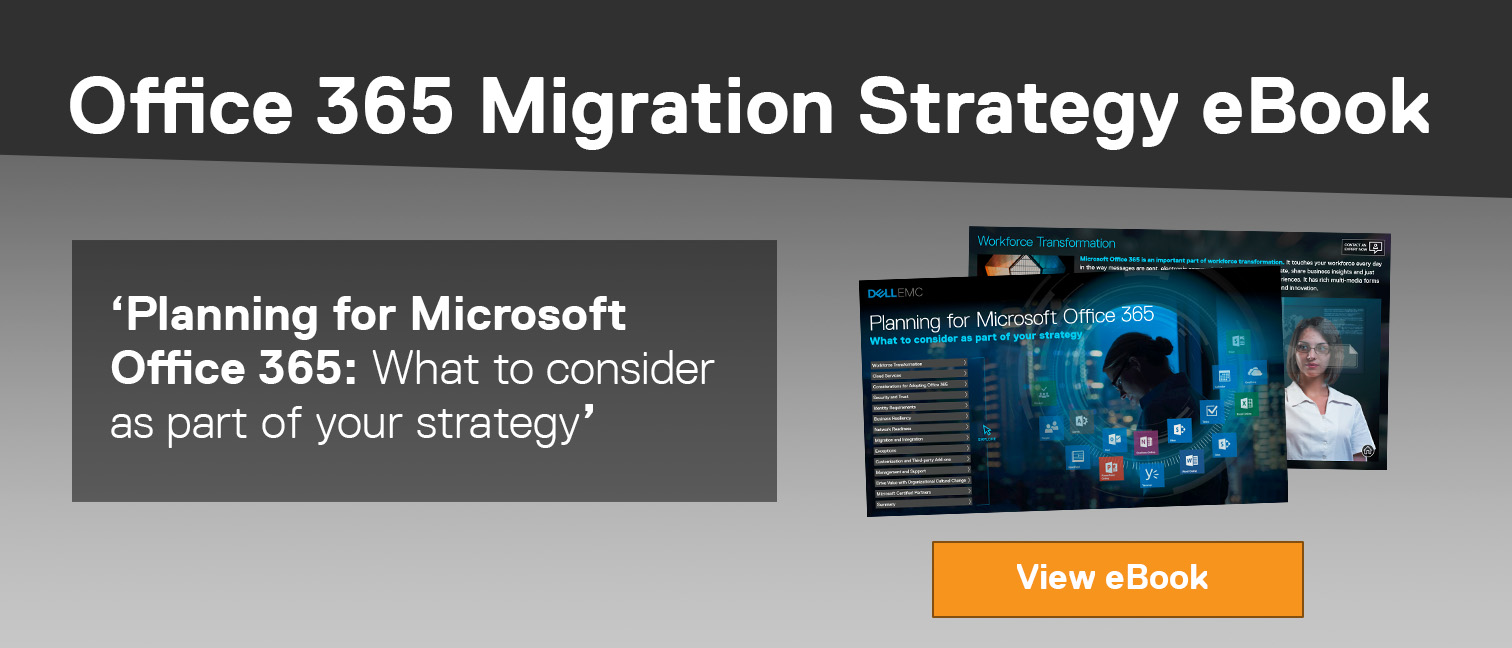Adopting Office 365 is a no-brainer for many organizations, which is why so many have started or plan to make the move. It’s pretty easy, just buy your Office 365 subscription and viola you’re on your way. Or are you?
Well, not quite.
I’ve personally helped many organizations migrate to Office 365 and it never fails, customers are often surprised by all the considerations they need to give thoughtful attention. I suppose that’s why they partner with us, since we’ve helped so many customers successfully migrate and adopt Office 365 services.
In my experience, organizations often make the mistake of thinking they can just move from on-premises to the cloud. Well, it’s not quite that easy. Office 365 is not just the traditional functionality of the on-premises productivity suite of applications. It’s a whole new suite of cloud services designed to change the way people work. Making the move, however, is not as simple as it may initially seem. Based on my extensive experience,I’ve identified 10 considerations your business should contemplate prior to beginning your Office 365 migration journey.
Let’s walk through them one at a time:
- Security & Trust – Maintaining security and trust is critical for a successful move to the cloud or hybrid environment. You’ll need to understand how to protect private and sensitive data, including users under the auspices of eDiscovery. You may want to consider using Office 365 features such as Data Loss Protection and encryption to protect this content.
- Identity Requirements – Office 365, as a multi-tenant cloud service, has some requirements for identity that, while often consistent with Active Directory implementations, may be inconsistent in some instances. There may be some actions required on your part to align with Office 365 requirements and recommendations.
- Business Resiliency – While Office 365 will provide you with the majority of your business resiliency needs, your on-premises infrastructure may need to be optimized to support cloud resiliency.
- Network Readiness – Moving to Office 365 changes network traffic patterns, therefore, it’s important to identify and manage risks. Understand the impact these workloads will have on your network to ensure it’s capable of meeting the required performance metrics. Keep in mind, your users’ Office 365 experience relies on network quality, which is why you’ll want to ensure there’s no negative impact to their perceptions of the new services.
- Migration & Integration – There are lots of moving parts to consolidate and integrate with Office 365. Discovering existing content sources and determining which to migrate and integrate or retire altogether requires a methodical and comprehensive approach. You’ll want to plan optimal migration and integration scenarios based on business groups, branch offices, application groups and geographical location requires careful planning and coordination.
- Accommodate Exceptions – It’s important to identify any entities that require special handling and those who may have migration restrictions so you can plan accordingly. There may be applications that restrict upgrading or environments not capable of supporting Office 365.
- Customization & Third-party Add-ons – Custom applications can be the reason why organizations delay moving to Office 365. Not only is it a big effort to re-write custom widgets and apps, but many are concerned they’ll lose the ability to customize the experience as much in Office 365 as they can on-premises.
- Management & Support – Transitioning to cloud-based services can be challenging for IT Teams, who are used to managing the entire ecosystem. Administration of Office 365 as a cloud-based platform can be challenging because much of it is managed outside the business, requiring the IT team to adopt a whole new way of managing the business.
- Drive Value with Organizational Cultural Change – Adopting Office 365 is a fundamental cultural change for the entire organization. Specifically for IT, it’s a whole new mindset, which can be one of the most challenging aspects of transforming from an organization previously focused on infrastructure and platforms to user-centric applications and services. Continuous communication and feedback with end-users becomes the new norm.
- Microsoft Partners – Microsoft understands the importance of having certified partners who can help you gain the most value from your Office 365 investment. That’s why they grant competencies to partners who’ve demonstrated proficiency in a particular area, by having both skilled employees as well as satisfied customers. You’ll want to work with a partner who has strong Microsoft experience.
If you’d like to understand our perspective in more depth, view our new eBook “Planning for Microsoft Office 365 – What to Consider as Part of Your Strategy“.

Don’t Go It Alone!
Moving to Office 365 can help your organization deliver the modern experiences employees have come to expect for achieving new heights in productivity and innovation. And it can help you deliver lower and more predictable IT spending. While there are many dependencies, migrations and integrations to consider as you plan your Office 365 migration strategy, you don’t have to go it alone.
Dell is a Gold Certified Microsoft Partner, so whether you’re just starting or have already begun your Office 365 journey, we’re here to help. Dell has helped customers of all sizes and complexities successfully adopt Office 365 and will bring that breadth of experience to your project. Contact your Dell representative or find a resource in your area to learn how we can help you.


